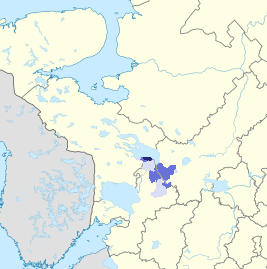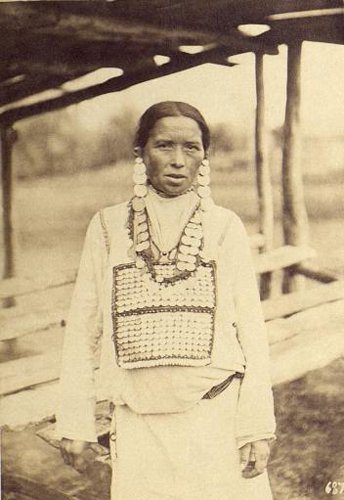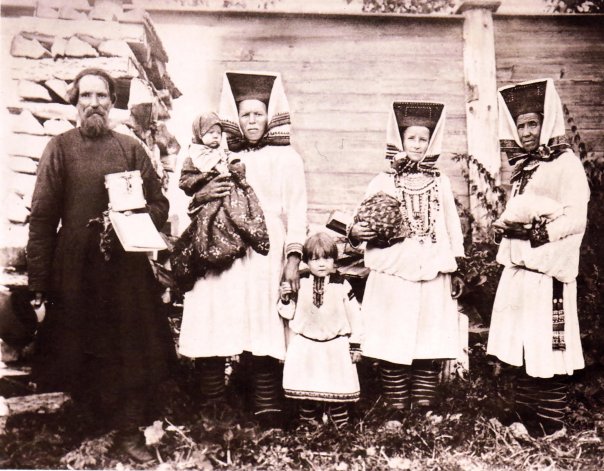|
Haplogroup N-M231
Haplogroup N (M231) is a Y-chromosome DNA haplogroup defined by the presence of the single-nucleotide polymorphism (SNP) marker M231. It is most commonly found in males originating from northern Eurasia. It also has been observed at lower frequencies in populations native to other regions, including parts of the Balkans, Central Asia, East Asia, and Southeast Asia. However, the basal paragroup N* has only been found in populations indigenous to China and Cambodia. Subclades of N-M231 have been found at low levels in Southeast Asia, the Pacific Islands, Southwest Asia and the Balkans. These factors tend to suggest that it originated in East Asia or Southeast Asia. Origins Haplogroup NO-M214 – its most recent common ancestor with its sibling, haplogroup O-M175 – is estimated to have existed about 36,800–44,700 years ago.YFull Haplogroup YTre ... [...More Info...] [...Related Items...] OR: [Wikipedia] [Google] [Baidu] |
East Asia
East Asia is a geocultural region of Asia. It includes China, Japan, Mongolia, North Korea, South Korea, and Taiwan, plus two special administrative regions of China, Hong Kong and Macau. The economies of Economy of China, China, Economy of Japan, Japan, Economy of South Korea, South Korea, and Economy of Taiwan, Taiwan are among the world's largest and most prosperous. East Asia borders North Asia to the north, Southeast Asia to the south, South Asia to the southwest, and Central Asia to the west. To its east is the Pacific Ocean. East Asia, especially History of China, Chinese civilization, is regarded as one of the earliest Cradle of civilization#China, cradles of civilization. Other ancient civilizations in East Asia that still exist as independent countries in the present day include the History of Japan, Japanese, History of Korea, Korean, and History of Mongolia, Mongolian civilizations. Various other civilizations existed as independent polities in East Asia in the past ... [...More Info...] [...Related Items...] OR: [Wikipedia] [Google] [Baidu] |
Vepsians
Veps, or Vepsians (), are a Baltic Finns, Baltic Finnic people who speak the Veps language, which belongs to the Finnic languages, Finnic branch of the Uralic languages. According to the 2002 Russian census, there were 8,240 Veps in Russia. Of the 281 Veps in Ukraine, 11 spoke Vepsian according to the 2001 Ukrainian census. The self-designations of these people in various dialects are ''vepslaine'', ''bepslaane'' and (in northern dialects, southwest of Lake Onega) ''lüdinik'' and ''lüdilaine''. Almost all Vepsians are fluent in Russian language, Russian. The younger generation, in general, does not speak Vepsian; however, many have an understanding of the language. Geography In modern times, they live in the area between Lake Ladoga, Lake Onega and Lake Beloye (Vologda Oblast), Lake Beloye – in the Russian Republic of Karelia in the former Veps National Volost, in Leningrad Oblast along the Oyat River in the Podporozhsky District, Podporozhsky and Lodeynopolsky Districts ... [...More Info...] [...Related Items...] OR: [Wikipedia] [Google] [Baidu] |
Chuvash People
The Chuvash people (, ; , ) also called Chuvash Tatars, are a Turkic ethnic group, a branch of the Oğurs, inhabiting an area stretching from the Idel-Ural region to Siberia. Most of them live in the Russian republic of Chuvashia and the surrounding area, although Chuvash communities may be found throughout Russia as well as in Central Asia. They speak Chuvash, a Turkic language that diverged from other languages in the family more than a millennium ago. Among the Chuvash believers, the majority are Eastern Orthodox Christians although a minority follow Vattisen Yaly or Sunni Islam. Etymology There is no universally accepted etymology of the word ''Chuvash'', but there are two theories. One theory suggests that the word ''Chuvash'' may be derived from Common Turkic ''jăvaş'' ('friendly', 'peaceful'), as opposed to ''şarmăs'' ('warlike'). Another theory is that the word is derived from the '' Tabghach,'' an early medieval Xianbei clan and founders of the Northern ... [...More Info...] [...Related Items...] OR: [Wikipedia] [Google] [Baidu] |
Sami People
Acronyms * SAMI, ''Synchronized Accessible Media Interchange'', a closed-captioning format developed by Microsoft * Saudi Arabian Military Industries, a government-owned defence company * South African Malaria Initiative, a virtual expertise network of malaria researchers People * Sami (name), including lists of people with the given name or surname * Sámi people, the indigenous people of Norway, Sweden, the Kola Peninsula and Finland * Samantha Shapiro (born 1993), American gymnast nicknamed "Sami" Places * Sami (ancient city), an ancient Greek city in the Peloponnese * Sami, Burkina Faso, a district * Sämi, a village in Lääne-Viru County in northeastern Estonia * Sami District, Gambia * Sami, Cephalonia, Greece, a municipality ** Sami Bay, east of Sami, Cephalonia * Sami, Gujarat, India, a town * Sami, Paletwa, Myanmar, a town Other uses * Sámi languages, languages spoken by the Sámi * Sami (chimpanzee), kept at the Belgrade Zoo * Sami, a common name fo ... [...More Info...] [...Related Items...] OR: [Wikipedia] [Google] [Baidu] |
Mari People
The Mari ( ), also formerly known as the Cheremis or Cheremisses, are a Finno-Ugric peoples, Finno-Ugric people in Eastern Europe, who have traditionally lived along the Volga and Kama River, Kama rivers in Russia. They live mostly in the Mari El republic, with significant minorities in Bashkortostan, Perm Krai, Tatarstan and Udmurtia. Name The ethnic name ''mari'' derives from the Proto-Indo-Iranian root *''márya''-, meaning 'human', literally 'mortal', which indicates early contacts between Finno-Ugric languages, Finno-Ugric and Indo-Iranian languages. Subgroups There are two main ethnographic subgroups of Mari people: Meadow Mari people, Meadow Mari, who live on the right bank of the Volga river, and Hill Mari people, Hill (or Mountain) Mari, who live on the left bank. The ethnogenesis of these two subgroups, and formation of distinct dialects, probably took place in the 14th century. Meadow Mari comprise the majority of Mari, and Meadow Mari language, their language va ... [...More Info...] [...Related Items...] OR: [Wikipedia] [Google] [Baidu] |
Latvians
Latvians () are a Baltic ethnic group and nation native to Latvia and the immediate geographical region, the Baltics. They are occasionally also referred to as Letts, especially in older bibliography. Latvians share a common Latvian language, culture, history and ancestry. History A Balto-Finnic-speaking tribe known as the Livs settled among the northern coast of modern day Latvia. The Germanic settlers derived their name for the natives from the term Liv. They referred to all the natives as "Letts" and the nation as "Lettland", naming their colony Livonia or Livland. The Latin form, ''Livonia'', gradually referred to the whole territory of modern-day Latvia as well as southern Estonia, which had fallen under Germanic influence. Latvians and Lithuanians are the only surviving members of the Baltic branch of the Indo-European family. Culture Influences Latvians share a common language and have a unique culture with traditions, holidays, customs and arts. The culture a ... [...More Info...] [...Related Items...] OR: [Wikipedia] [Google] [Baidu] |
Lithuanians
Lithuanians () are a Balts, Baltic ethnic group. They are native to Lithuania, where they number around 2,378,118 people. Another two million make up the Lithuanian diaspora, largely found in countries such as the Lithuanian Americans, United States, Lithuanians in the United Kingdom, United Kingdom, Lithuanian Brazilians, Brazil and Lithuanian Canadians, Canada. Their native language is Lithuanian language, Lithuanian, one of only two surviving members of the Baltic language family along with Latvian language, Latvian. According to the Lithuanian census of 2021, census conducted in 2021, 84.6% of the population of Lithuania identified themselves as Lithuanians. Most Lithuanians belong to the Catholic Church in Lithuania, Catholic Church, while the Lietuvininkai who lived in the northern part of East Prussia prior to World War II, were mostly Lutherans. History The territory of the Balts, including modern Lithuania, was once inhabited by several Baltic tribal entities (Sudovi ... [...More Info...] [...Related Items...] OR: [Wikipedia] [Google] [Baidu] |
Pinega
Pinega () is a types of inhabited localities in Russia, rural locality (a settlement), formerly a town, in Pinezhsky District of Arkhangelsk Oblast, Russia, located on the right bank of the Pinega River (hence the name). It serves as the administrative center of Pinezhsky Selsoviet, one of the seventeen selsoviets into which the district is subdivisions of Russia#Administrative divisions, administratively divided. Subdivisions of Russia#Municipal divisions, Municipally, it is the administrative center of Pinezhskoye Rural Settlement, one of the fifteen rural settlements in the district. Population: . History Pinega was known from 17th century as the pogost of Pinezhsky Volok. In the course of the administrative divisions of Russia in 1708–1710, administrative reform performed in 1708 by Peter the Great the area was included into Archangelgorod Governorate, with the creation of Kevrolsky Uyezd. The center of the uyezd was located in Kevrola, now a village. In 1780, the Governorat ... [...More Info...] [...Related Items...] OR: [Wikipedia] [Google] [Baidu] |
Russians
Russians ( ) are an East Slavs, East Slavic ethnic group native to Eastern Europe. Their mother tongue is Russian language, Russian, the most spoken Slavic languages, Slavic language. The majority of Russians adhere to Eastern Orthodox Church, Orthodox Christianity, ever since the Middle Ages. By total numbers, they compose the largest Slavs, Slavic and Ethnic groups in Europe, European nation. Genetic studies show that Russians are closely related to Polish people, Poles, Belarusians, Ukrainians, as well as Estonians, Latvians, Lithuanians, and Finns. They were formed from East Slavic tribes, and their cultural ancestry is based in Kievan Rus'. The Russian word for the Russians is derived from the Names of Rus', Russia and Ruthenia, people of Rus' and the territory of Rus'. Russians share many historical and cultural traits with other European peoples, and especially with other East Slavic ethnic groups, specifically Belarusians and Ukrainians. The vast majority of Russians ... [...More Info...] [...Related Items...] OR: [Wikipedia] [Google] [Baidu] |
Arkhangelsk Oblast
Arkhangelsk Oblast ( rus, Архангельская область, p=ɐrˈxanɡʲɪlʲskəjə ˈobɫəsʲtʲ) is a federal subjects of Russia, federal subject of Russia (an oblast). It includes the Arctic Ocean, Arctic archipelagos of Franz Josef Land and Novaya Zemlya, as well as the Solovetsky Islands in the White Sea. Arkhangelsk Oblast also has administrative jurisdiction over the Nenets Autonomous Okrug (NAO). Including the NAO, Arkhangelsk Oblast has an area of , it is the largest of List of first-level administrative divisions by area, first-level administrative divisions in Europe. Its population (including the NAO) was 1,227,626 as of the Russian Census (2010), 2010 Census. The classification of inhabited localities in Russia, city of Arkhangelsk, with a population of 301,199 as of the 2021 Census, is the administrative center of the oblast.Charter, Article 5 The second largest city is the nearby Severodvinsk, home to Sevmash, a major shipyard for the Russian N ... [...More Info...] [...Related Items...] OR: [Wikipedia] [Google] [Baidu] |
Karelians
Karelians (; ; ; ) are a Baltic Finnic ethnic group who are indigenous to the historical region of Karelia, which is today split between Finland and Russia. Karelians living in Russian Karelia are considered a distinct ethnic group closely related to Finnish Karelians, who are considered a subset of Finns. This distinction historically arose from Karelia having been fought over and eventually split between Sweden and Novgorod, resulting in Karelians being under different cultural spheres. In Russia, Karelians mostly live in the Republic of Karelia, where they are the designated ethnic group, and in other adjacent north-western parts of the country. They traditionally speak the Karelian language and are Eastern Orthodox Christians. There are also significant Karelian enclaves in the Tver and Novgorod oblasts, as some Karelians migrated to those areas after the Russo-Swedish War of 1656–1658. In Finland, the term Karelian generally refers to the Finnish Karelians, who ... [...More Info...] [...Related Items...] OR: [Wikipedia] [Google] [Baidu] |
Nanai People
The Nanai people () are a Tungusic people of East Asia who have traditionally lived along Heilongjiang (Amur), Songhuajiang (Sunggari) and Wusuli River (Ussuri) on the Middle Amur Basin. The ancestors of the Nanai were the Wild Jurchens of northernmost Manchuria, which is now the region of Outer Manchuria in Russia's Far Eastern Federal District. The Nanai language belongs to the Manchu-Tungusic family. According to the 2010 census there were 12,003 Nanai in Russia. Name Common names for these people include Nanai ( Nanai: , , , ) and Hezhen (, ; ). There are also terms formerly in use: Goldi, Golds, Goldes, and Samagir. Other self names are Qilang (, ; ), and . means 'land, earth, ground, country' or, in this context, 'native, local'; , , or means 'people' in different dialects. The Russian linguist L. I. Sem gives the name ''Hezhe nai'' () or ''Hezheni'' (, ) and explains it as the self-name of the Nanai of the lower Amur, meaning 'people who live along the low ... [...More Info...] [...Related Items...] OR: [Wikipedia] [Google] [Baidu] |








